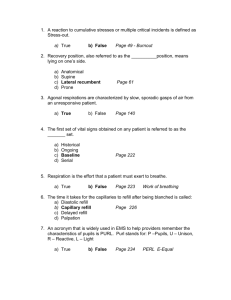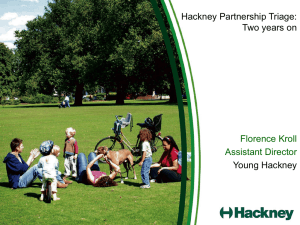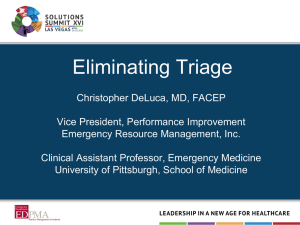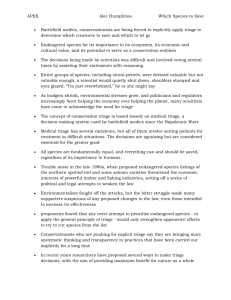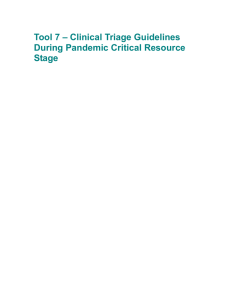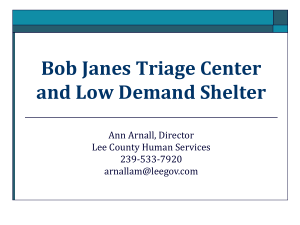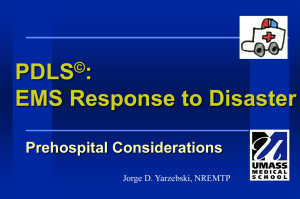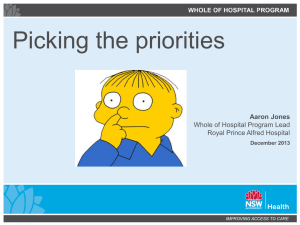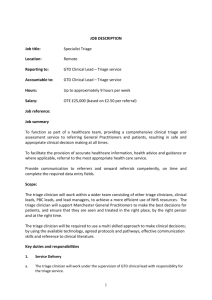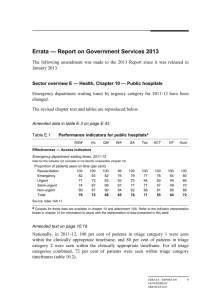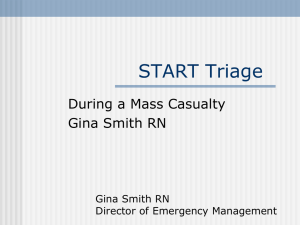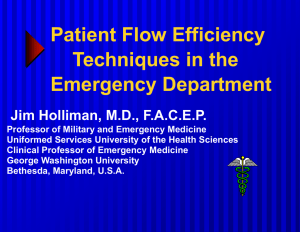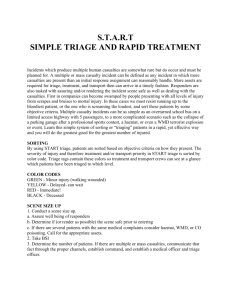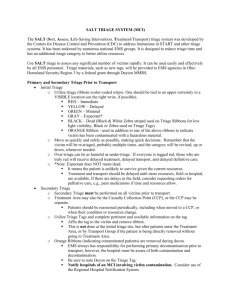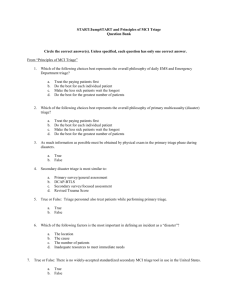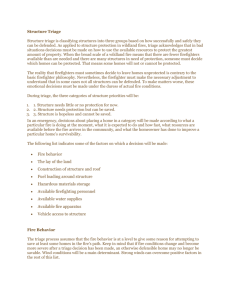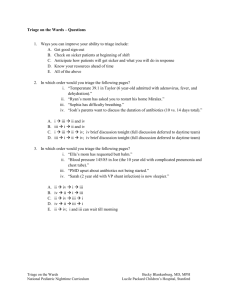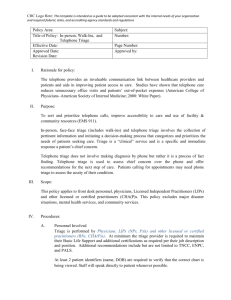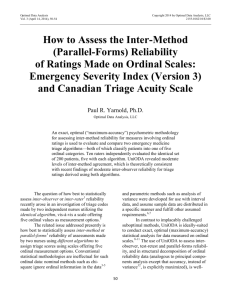Web appendix: mathematical model
advertisement
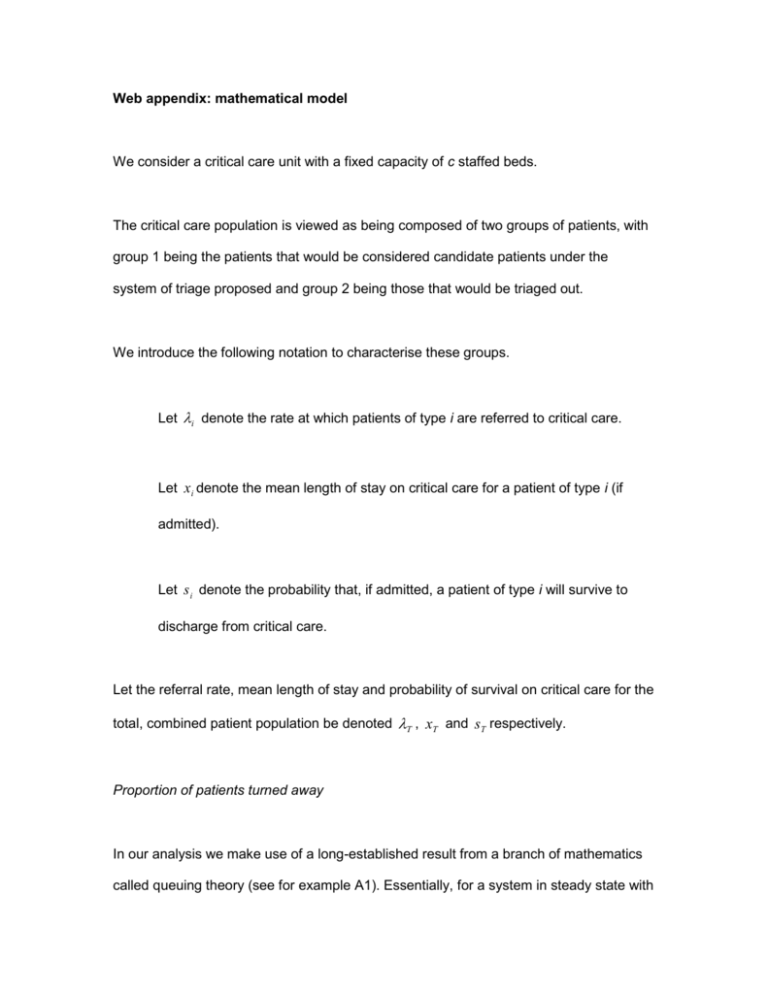
Web appendix: mathematical model We consider a critical care unit with a fixed capacity of c staffed beds. The critical care population is viewed as being composed of two groups of patients, with group 1 being the patients that would be considered candidate patients under the system of triage proposed and group 2 being those that would be triaged out. We introduce the following notation to characterise these groups. Let i denote the rate at which patients of type i are referred to critical care. Let x i denote the mean length of stay on critical care for a patient of type i (if admitted). Let s i denote the probability that, if admitted, a patient of type i will survive to discharge from critical care. Let the referral rate, mean length of stay and probability of survival on critical care for the total, combined patient population be denoted T , xT and sT respectively. Proportion of patients turned away In our analysis we make use of a long-established result from a branch of mathematics called queuing theory (see for example A1). Essentially, for a system in steady state with no triage in which patients arrive at random to a unit with a fixed number of beds, c, the proportion of patients that are turned away because they are referred at a time when all c beds are occupied is given by T ,c Tc xTc . c Tk xTk c! k 0 (1) k! This result holds for any distribution of length of stay. Similarly, the proportion of candidate patients turned away under a system of triage is given by the same equation but using the referral rate and mean length of stay for patients in group 1 1,c 1c x1c . c 1k x1k c! k 0 (2) k! The number of survivors without and with triage Within our model we suppose that any member of the critical care population that is not admitted to critical care at the point of referral (either because they are triaged out or because they are turned away from a fully occupied unit) goes on to die. Under this assumption, the only survivors are those patients that are admitted to critical care and then go on to survive to discharge. Without triage, over a period of time P there will be an expected number of P T candidate patients referred to critical care, a proportion (1 T ,c ) of whom will be referred at a point in time when a bed is available. Of these, a proportion sT will survive to discharge. The expected number of survivors without triage is hence given by N no _ triage PT sT (1 T ,c ) . (3) The number of survivors under the system of triage proposed is given using the same equation but only considering those patients in group 1 N triage P1 s1 (1 1,c ) . (4) Within our work, the impact of triage is estimated by calculating the ratio N triage N no _ triage 1 s1 (1 1,c ) . T sT (1 T ,c ) (5) Note that the variables are constrained by the equations that define the total arrival rate, the overall survival probability and overall mean length of stay T , 1 , 2 0 , (6) T sT 1s1 2 s2 T , 1 , 2 0 , 0 sT , s1 , s2 1 (7) T xT 1 x1 2 x2 T , 1 , 2 , xT , x1 , x2 0 . (8) T 1 2 and The above analysis enables one to identify circumstances under which triage at the point of referral would result in fewer deaths if the system is in steady state. In some contexts, referral rates will change so quickly that steady state approximations do not apply. However, the key insights generated through this analysis concerning the roles of outcome and resource use and threshold referral levels still hold. Reference A1. T.L. Saaty, 1983, Elements of Queuing Theory with Applications, Dover Publications.

